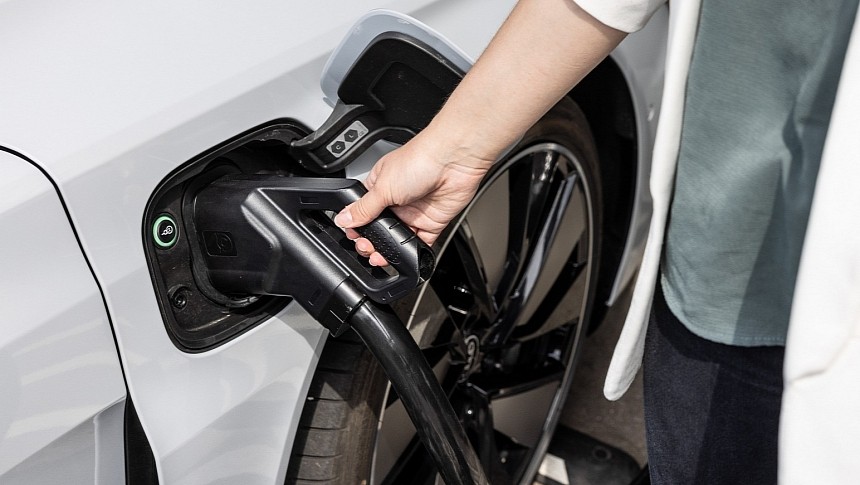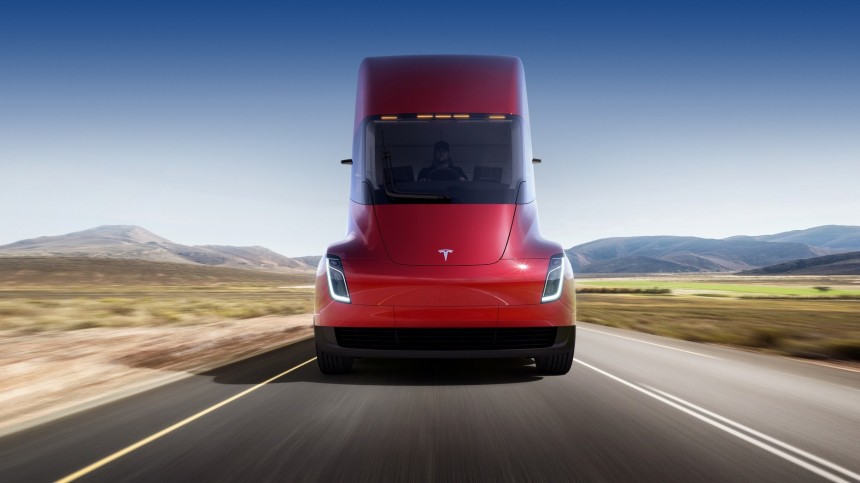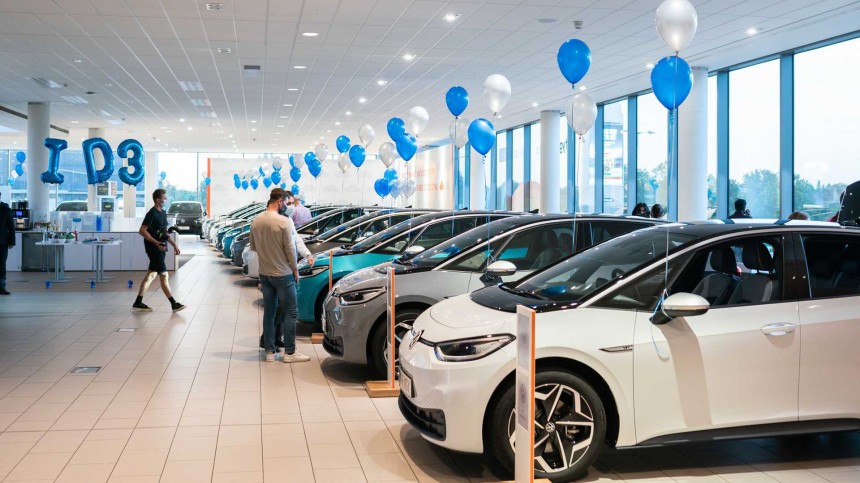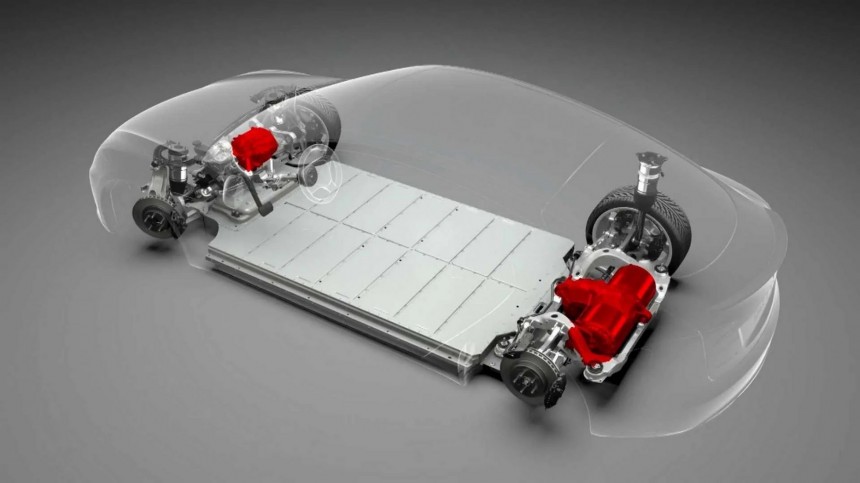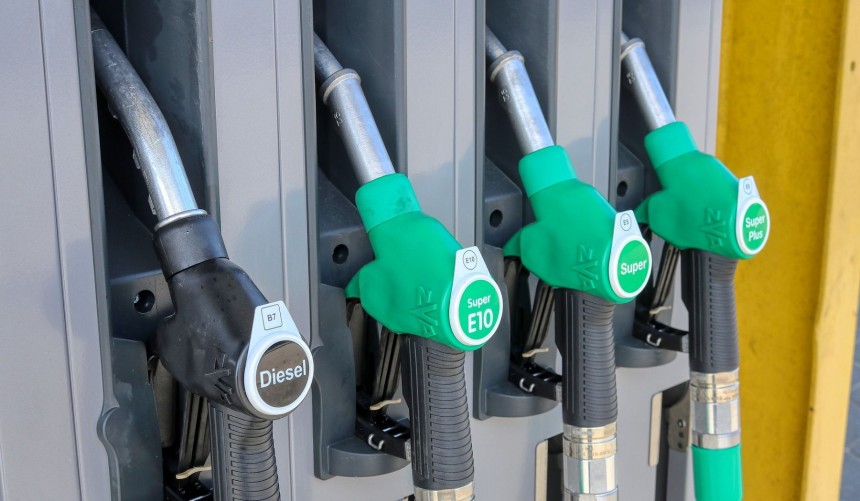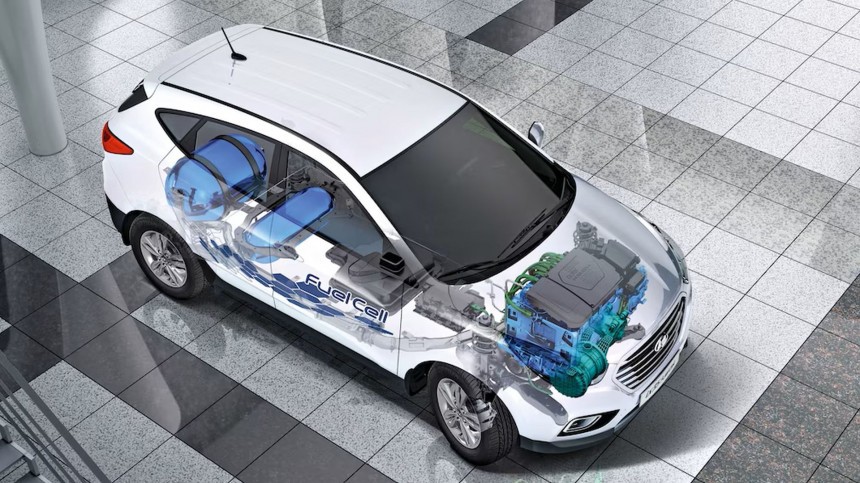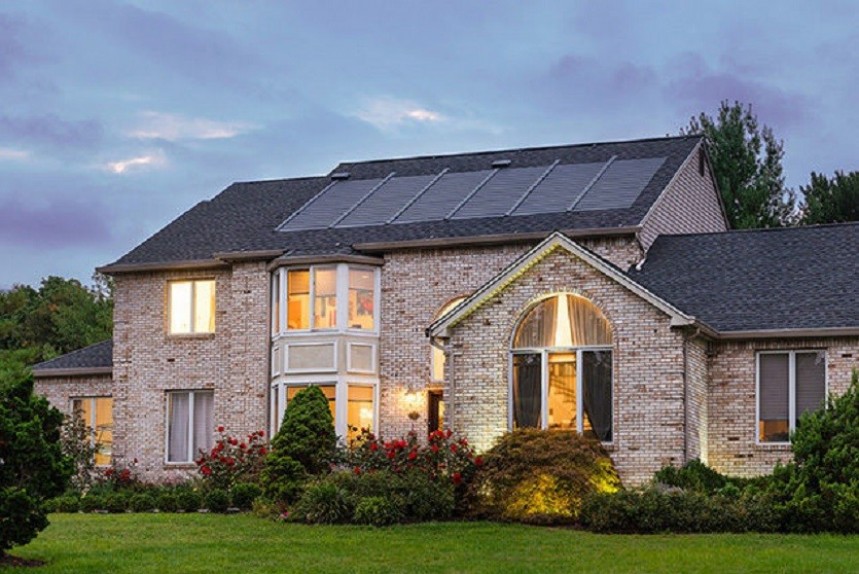I've only recently read an article from Bloomberg that really got me thinking. Written by Colin McKerracher, its title is "Electric Cars Are Winning Out Because of Consumers, Not Politicians." When you check only the title, you get the impression that battery electric vehicles (BEV) are winning in an absolute sense, meaning that they are beating the internal combustion engine (ICE) and everything else. However, the article refers to how BEVs are leaving fuel cell electric vehicles (FCEVs) in the dust. Is that genuinely winning?
If you take the particular situation of BEVs versus FCEVs, it may be. The deal is that McKerracher used the argument to dispute what some CEOs are saying – more specifically, what Carlos Tavares declared in Paris on January 18, 2022. In a collective interview with several European newspapers, the Stellantis CEO noted that "electrification is a technology chosen by politicians, not by industry." If you consider that FCEVs are also electric, that's a poor choice of words. Anyway, he was referring to BEVs.
Ironically, Tavares did not oppose BEVs to FCEVs. He compared them to hybrid electric vehicles (HEVs), saying that a "light hybrid vehicle" costs half as much as an equivalent BEV. His concerns were with imposing a technological solution over others that people could afford. In other words, he did not mention hydrogen or fuel cells at any time, even because they are currently much harder to live with than vehicles powered solely by batteries.
McKerracher said FCEVs enjoy higher incentives and that even having more public money did not make them take off. Indeed, but neither did that help BEVs. The ones that manage to be sold need a lot of government aid to compete with ICE vehicles. When you can only reach the finish line with advantages other competitors do not enjoy, that's not a win. That's cheating.
I have already discussed this when I talked about battery electric trucks (BETs), but that also applies to passenger vehicles. Very few places see BEV sales increase without some sort of push from the local governments. Tax credits, license plates for free, or even monetary incentives for BEV purchases are all around.
Norway is the country with the highest BEV adoption rate in the world, with a 79.2% market share in 2022. Was it due to how much better these electric cars are? No, it was due to the government subsidies. Starting in 1990, they did not pay purchase or import taxes. In 1996, they got exempt from road tax, but that changed in 2021 with a reduced tariff. In 2022, they had to pay it like any other car, but the advantages are still aplenty.
BEVs did not have to pay tolls on roads starting in 1997. In 1999, cities began allowing these cars to park for free. Both benefits ended in 2017. In 2001, BEVs did not have to pay the 25% VAT all other vehicles are subject to. In 2023, the tax is charged only for values above 500,000 Norwegian Kroner ($46,225 at the current exchange rate). These are just some examples of all the benefits BEVs have received and still get in Norway. It is surprising that the adoption rate is not 100%.
In China, the government also offered several incentives, but its primary strategy was actually making things more difficult for ICE vehicle buyers. In big cities like Shanghai, you can only purchase a car if you have a license plate for it. Such a license plate can cost as much as several vehicles, which explains the massive number of luxury cars in that city. BEVs do not have to follow that rule: you can buy one and have a license plate for free. The Chinese health system explains that.
Chinese megalopolises have millions of inhabitants. With a good chunk of these folks driving in cities, the skies were gray most of the time. In other words, China pursued BEVs mostly for health concerns, which eventually gave it a competitive advantage. China processes most raw materials for lithium-ion batteries, and some of the biggest battery makers are Chinese. The European Commission is now investigating whether Chinese BEVs are competitive due to government subsidies.
American states also offer several incentives for BEVs, but the adoption in these places is not as high as the local governments would expect. Inventories in the US were packed with electric cars. In Europe, Volkswagen is cutting ID.3 and Cupra Born production because there is no demand for these cars, even with the government stimulating their sales. That led several critics to mock the situation and claim that BEVs only sell when you bribe customers to purchase them. Like it or not, that's fair criticism.
Electric car advocates will say that this is only to even the game because electric cars are more expensive. That's a lousy excuse: why would ICE vehicles be to blame for that? If all cars are produced in the same industries, with similar equipment, mainly with the same materials, and paying the same taxes, the government should not interfere if one is cheaper to build than the other: that's something engineers have to worry about.
The problem is that they are doing that, but there is no way to make a BEV cost less when its main component is so expensive. Only new battery tech could solve that. While this tech has not arrived, pushing for the one we currently have to be competitive looks like a mistake – especially because it only works to sell electric cars, not to keep them running.
I have recently written that a Tesla battery pack costs much more than the company charges for a replacement. It "only" charges $21,000 for a new component because it gets to keep the old one. If the owner wants to have it, for whatever reason, Tesla applies a core charge of $10,000 to let them have it. The BEV maker treats it as if it were its own property instead of being candid about the situation: that the old battery pack helps to cover the costs of the new one. In fact, it is a bit worse than that: Tesla keeps the old battery pack, remanufactures it, and sells it for a higher price. Theoretically, it is making money with the old parts that belonged to its customers.
Getting incentives to sell BEVs and not to keep them running will turn these vehicles into disposable cars. The battery pack will cost as much or more to replace than the vehicle. If subsidies are acceptable in any shape or form, they should be on the battery packs, not on BEVs. That would help owners replace them when they are out of warranty. On the other hand, it will make it even more evident how financially unsustainable the business is if it needs tax breaks and discounts to keep working.
BEV advocates will claim that fossil fuels also enjoy incentives. That's true, but they are not for some people to drive a certain kind of vehicle. They are for all these fuels, regardless of their applications. Diesel is used to feeding heating systems, for example. Summing up, the subsidies are meant to ensure the cost of living will remain at tolerable levels. If everybody pays real market prices for gasoline or diesel, everything will get more expensive. If you think about it, that's also cheating, but we have lived that way for so long that facing reality would lead to a social meltdown.
Brazil tried to solve that by using subsidies only for diesel. That made this fuel a "forbidden fruit" for passenger cars: it could only be used in buses, trucks, and 4x4 vehicles. However, it is difficult to measure how well that went because the Brazilian government used to set fuel prices, which is relatively easy when it also controls the company that refines and distributes oil products in the country. That led Petrobras several times to the brink of bankruptcy, not to mention the several corruption cases in which the oil giant was dragged. In such a chaotic scenario, there's no way to verify how restricting subsidies to diesel plays out – as it is impossible to say BEVs are winning when governments have to help sell them.
If you are happy about a small victory, you can say BEVs are beating FCEVs right now, but that's it. They can be charged anywhere with a power outlet, which makes their "fuel" more readily available than hydrogen. But that's just an apparent win, as Alistair Weaver reminded us in a great text for LinkedIn Pulse.
Edmunds's editor-in-chief said that what holds BEVs back is not range anxiety but rather charging anxiety. He shared his experience with the company's Rivian R1T on a road trip with his wife and his toddlers. I advise you to read it and see what an understatement it would be to call that an adventure. It was hell, one that Weaver tried to warn everybody else about.
As much as BEV advocates think they have the final say on the best personal transportation solution for us all, it clearly has crucial issues to solve before reaching that status. We need way more chargers. Even if we had them, charging times are still too long, which multiplies the need for these stalls. The math is simple: a 10%-to-80% charge demands at least 30 minutes for current 400V cars. If the charger serving one of these vehicles could do the job in 5 minutes, we could theoretically charge 6 BEVs in the same 30 minutes. As they can't, six stalls are needed to perform the same task for the same amount of vehicles in the same period.
Regarding fuel cells, the small production scale makes repairing them prohibitively expensive, as I recently wrote about a Hyundai ix35 FCEV that needed a fuel cell replacement. On top of that, electricity is also much cheaper than green hydrogen, but that may change.
Car and Driver recently revealed that fast charging may already cost more than using an equivalent gasoline vehicle. Home charging is always cheaper, but is that the case when you always top up your BEV at home? The higher the energy consumption, the higher the prices. When all households have an electric car, will that price advantage remain?
One way to solve that would be to have several solar panels at home and generate your own electricity. In Portugal, several companies want to sell you solar panels at reduced monthly fees. However, make no mistake: these companies are not concerned about the environment or carbon emissions. They want the government incentives that come with installing these pieces of equipment.
The catch is that the electric energy will be generated when nobody is home. If you work 9 to 5, you'd have to leave your car at home to charge and go to the office by bus or another public transportation means. The solution is to add a battery pack to your home to harness the electricity generated while the sun shines. You may use that energy to recharge your vehicle from it when you arrive home. Did you notice you'll need two battery packs instead of one?
The home unit would depend on a lot of calculations to be selected. Those driving only a few miles per day may only need a small battery pack to cover the daily needs of their BEVs and their homes. For these guys, a plug-in hybrid electric vehicle (PHEV) could be more than enough, but even they will not dodge high battery pack prices. This component on a Toyota RAV4 Prime costs between $10,000 to $12,000. Those driving more miles or even depleting their battery packs in a single day would only be happy with a part that was similar in size or bigger than what they have in their electric cars.
Any way you look at it, you need a massive investment in solar panels and batteries not to be affected by higher energy needs. When all houses have similar demands – as BEV advocates dream – electricity costs will increase. Is that a win?
There's a lot that needs to change before electric cars can celebrate any victory. When we no longer need so many natural resources, when energy generation prices drop, when battery packs set you back only a fraction of what they currently cost, and when charging is no longer a concern, then we may say they are winning. The BEV victories that some people celebrate can look more like concerns when you anticipate their outcomes. If BEVs become the future of cars and fail, they do not die alone.
Ironically, Tavares did not oppose BEVs to FCEVs. He compared them to hybrid electric vehicles (HEVs), saying that a "light hybrid vehicle" costs half as much as an equivalent BEV. His concerns were with imposing a technological solution over others that people could afford. In other words, he did not mention hydrogen or fuel cells at any time, even because they are currently much harder to live with than vehicles powered solely by batteries.
McKerracher said FCEVs enjoy higher incentives and that even having more public money did not make them take off. Indeed, but neither did that help BEVs. The ones that manage to be sold need a lot of government aid to compete with ICE vehicles. When you can only reach the finish line with advantages other competitors do not enjoy, that's not a win. That's cheating.
Norway is the country with the highest BEV adoption rate in the world, with a 79.2% market share in 2022. Was it due to how much better these electric cars are? No, it was due to the government subsidies. Starting in 1990, they did not pay purchase or import taxes. In 1996, they got exempt from road tax, but that changed in 2021 with a reduced tariff. In 2022, they had to pay it like any other car, but the advantages are still aplenty.
BEVs did not have to pay tolls on roads starting in 1997. In 1999, cities began allowing these cars to park for free. Both benefits ended in 2017. In 2001, BEVs did not have to pay the 25% VAT all other vehicles are subject to. In 2023, the tax is charged only for values above 500,000 Norwegian Kroner ($46,225 at the current exchange rate). These are just some examples of all the benefits BEVs have received and still get in Norway. It is surprising that the adoption rate is not 100%.
Chinese megalopolises have millions of inhabitants. With a good chunk of these folks driving in cities, the skies were gray most of the time. In other words, China pursued BEVs mostly for health concerns, which eventually gave it a competitive advantage. China processes most raw materials for lithium-ion batteries, and some of the biggest battery makers are Chinese. The European Commission is now investigating whether Chinese BEVs are competitive due to government subsidies.
American states also offer several incentives for BEVs, but the adoption in these places is not as high as the local governments would expect. Inventories in the US were packed with electric cars. In Europe, Volkswagen is cutting ID.3 and Cupra Born production because there is no demand for these cars, even with the government stimulating their sales. That led several critics to mock the situation and claim that BEVs only sell when you bribe customers to purchase them. Like it or not, that's fair criticism.
The problem is that they are doing that, but there is no way to make a BEV cost less when its main component is so expensive. Only new battery tech could solve that. While this tech has not arrived, pushing for the one we currently have to be competitive looks like a mistake – especially because it only works to sell electric cars, not to keep them running.
I have recently written that a Tesla battery pack costs much more than the company charges for a replacement. It "only" charges $21,000 for a new component because it gets to keep the old one. If the owner wants to have it, for whatever reason, Tesla applies a core charge of $10,000 to let them have it. The BEV maker treats it as if it were its own property instead of being candid about the situation: that the old battery pack helps to cover the costs of the new one. In fact, it is a bit worse than that: Tesla keeps the old battery pack, remanufactures it, and sells it for a higher price. Theoretically, it is making money with the old parts that belonged to its customers.
BEV advocates will claim that fossil fuels also enjoy incentives. That's true, but they are not for some people to drive a certain kind of vehicle. They are for all these fuels, regardless of their applications. Diesel is used to feeding heating systems, for example. Summing up, the subsidies are meant to ensure the cost of living will remain at tolerable levels. If everybody pays real market prices for gasoline or diesel, everything will get more expensive. If you think about it, that's also cheating, but we have lived that way for so long that facing reality would lead to a social meltdown.
Brazil tried to solve that by using subsidies only for diesel. That made this fuel a "forbidden fruit" for passenger cars: it could only be used in buses, trucks, and 4x4 vehicles. However, it is difficult to measure how well that went because the Brazilian government used to set fuel prices, which is relatively easy when it also controls the company that refines and distributes oil products in the country. That led Petrobras several times to the brink of bankruptcy, not to mention the several corruption cases in which the oil giant was dragged. In such a chaotic scenario, there's no way to verify how restricting subsidies to diesel plays out – as it is impossible to say BEVs are winning when governments have to help sell them.
Edmunds's editor-in-chief said that what holds BEVs back is not range anxiety but rather charging anxiety. He shared his experience with the company's Rivian R1T on a road trip with his wife and his toddlers. I advise you to read it and see what an understatement it would be to call that an adventure. It was hell, one that Weaver tried to warn everybody else about.
As much as BEV advocates think they have the final say on the best personal transportation solution for us all, it clearly has crucial issues to solve before reaching that status. We need way more chargers. Even if we had them, charging times are still too long, which multiplies the need for these stalls. The math is simple: a 10%-to-80% charge demands at least 30 minutes for current 400V cars. If the charger serving one of these vehicles could do the job in 5 minutes, we could theoretically charge 6 BEVs in the same 30 minutes. As they can't, six stalls are needed to perform the same task for the same amount of vehicles in the same period.
Car and Driver recently revealed that fast charging may already cost more than using an equivalent gasoline vehicle. Home charging is always cheaper, but is that the case when you always top up your BEV at home? The higher the energy consumption, the higher the prices. When all households have an electric car, will that price advantage remain?
One way to solve that would be to have several solar panels at home and generate your own electricity. In Portugal, several companies want to sell you solar panels at reduced monthly fees. However, make no mistake: these companies are not concerned about the environment or carbon emissions. They want the government incentives that come with installing these pieces of equipment.
The home unit would depend on a lot of calculations to be selected. Those driving only a few miles per day may only need a small battery pack to cover the daily needs of their BEVs and their homes. For these guys, a plug-in hybrid electric vehicle (PHEV) could be more than enough, but even they will not dodge high battery pack prices. This component on a Toyota RAV4 Prime costs between $10,000 to $12,000. Those driving more miles or even depleting their battery packs in a single day would only be happy with a part that was similar in size or bigger than what they have in their electric cars.
Any way you look at it, you need a massive investment in solar panels and batteries not to be affected by higher energy needs. When all houses have similar demands – as BEV advocates dream – electricity costs will increase. Is that a win?
There's a lot that needs to change before electric cars can celebrate any victory. When we no longer need so many natural resources, when energy generation prices drop, when battery packs set you back only a fraction of what they currently cost, and when charging is no longer a concern, then we may say they are winning. The BEV victories that some people celebrate can look more like concerns when you anticipate their outcomes. If BEVs become the future of cars and fail, they do not die alone.
